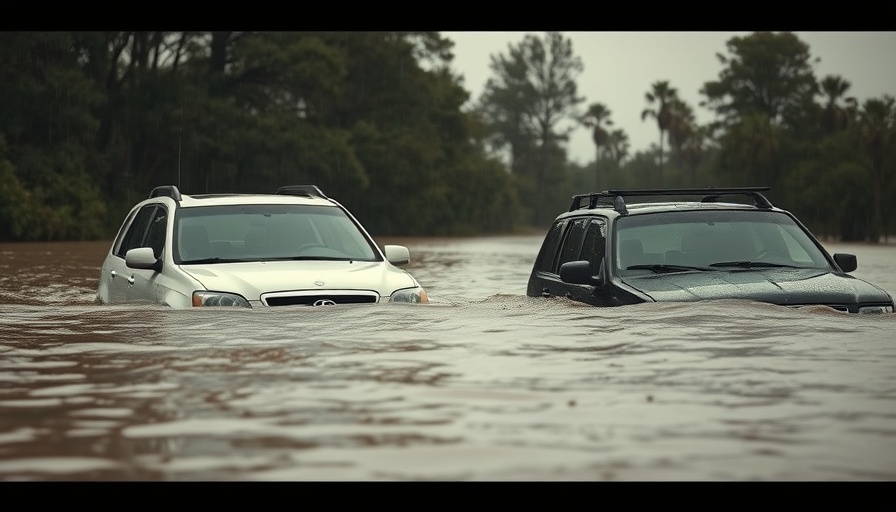
Understanding Flash Floods: A Growing Danger
Flash flooding is a dangerous phenomenon that can take lives and destroy property in minutes. As reported, flash floods kill more people than any other storm-related disasters, yet most of these incidents are preventable. Dangerous floodwaters can sweep away vehicles and pedestrians, a risk illustrated tragically by past incidents. Flood expert David T. Williams noted a sorrowful case in San Diego, where a driver and a child lost their lives after attempting to cross a flooded stream. To combat this, the National Weather Service (NWS) emphasizes the need for education through their ‘Turn Around, Don’t Drown’ campaign, which warns the public about the hidden threats of flash flooding.
What Triggers Flash Floods?
The definition of a flash flood is relatively straightforward: it's a sudden spike in water levels caused by intense rainfall or the rapid melting of snow. Flash floods may result from various factors including dam failures, mudslides, and overflowing rivers. Understanding the environment where one lives is crucial; in certain terrains, even a small amount of rain can lead to catastrophic consequences.
For instance, flash floods can occur even with just a few inches of water if the environmental conditions are right. Heavy rainfall can transform usually calm streams and rivers into torrents, and the ground saturation due to previous rains can exacerbate matters further. Williams points out how one inch of rain can swiftly flood desert areas, while a mere four inches in regions with limestone hills can lead to significant flooding.
The Science of Flash Flood Timing and Duration
The onset of flash floods can happen rapidly, typically within six hours of intense rainfall. This short timeframe makes them particularly dangerous for communities. Urban areas are often more susceptible due to the prevalence of concrete surfaces that do not absorb water, leading to quicker runoff.
When considering the duration of flash floods, they can range from a few hours to over a day depending on the amount of rain and the landscape. Being aware of how long floodwaters may last is essential for strategic planning and safety measures, especially in flood-prone areas.
Warning Systems and Community Preparedness
The National Weather Service provides critical warnings concerning flash flood risks, and it is important for residents, especially in urban California, to stay informed through local alerts. Residents should invest in a reliable weather radio or similar device to ensure they receive timely updates, especially when engaging in activities like hiking in potential flash flood zones.
Moreover, understanding the sound of an approaching flash flood can save lives. According to Williams, these floods often carry a loud roar as they surge, which could serve as an auditory warning for those nearby.
Strategies for Homeowners to Stay Safe
For California residents, being proactive is essential in mitigating risks associated with flash floods. Homeowners should conduct regular inspections of drainage systems around their properties and ensure they are clear of debris. Creating an emergency plan that includes a safe exit strategy in the event of a flash flood can be life-saving.
It's beneficial to familiarize oneself with local resources for flood safety, including community workshops and emergency preparedness training. Remember, investing in home maintenance now can make a significant difference in times of emergency.
Ultimately, raising awareness about the dangers of flash floods and being prepared are the best steps residents can take to protect themselves and their families during these unpredictable weather events.
 Add Row
Add Row  Add
Add 




Write A Comment